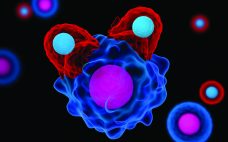Just about anyone in the biopharmaceutical industry will tell you that cost is now the primary concern in cell and gene therapy development. It hasn’t even been a decade since “manufacturability” was the main issue at hand — and cost has risen organically from related discussions. Regenerative medicine evolved from medical research rather than from drug-development companies, and technologies that worked in clinical settings haven’t translated directly to manufacturing facilities. Cost is often the problem. Early product successes (that ultimately…
Friday, January 31, 2020 Daily Archives
Cell Banking for Cell and Gene Therapy: Regulatory, Ethical, and Scientific Considerations
Regenerative medicine holds great potential for human disease management, with hundreds of cell and gene therapy (CGT) products for tissue/organ reconstitution or replacement in different stages of development and clinical testing for toxicity, safety, and efficacy. For example, currently more than 60 CGTs have marketing authorization (although many with only conditional approval) from central regulatory agencies worldwide (1). Those products are treating conditions such as hematopoietic malignancies, immunological disorders, and cartilage disorders. Most of those treatments use culture-expanded autologous or…
Do We Need Separate Regulations for Advanced Therapies?
Before we had the 21 CFR 1271 regulation for tissue therapies, the US Food and Drug Administration (FDA) had determined that regenerative medicine was exceptional enough to warrant its own regulations for good manufacturing practice (GMP). Since 2001, the tissue industry has adapted to those new rules while the FDA stepped up enforcement over time. When a cell or tissue product is regulated under 21 CFR 1271, its specific regulations apply before the general regulations for biologics and drugs. But…
CAR-T at the Crossroads: Is Allogeneic the Way to Go?
As cell therapies move through the clinic toward commercialization, respondents to an Informa Connect industry survey are beginning to look to allogeneic — or off-the-shelf — products as “the next big thing.” Almost 200 people contributed to the Cell Therapy Analytics Report, revealing their current positions within the burgeoning cell and gene therapy space and offering their thoughts and predictions for the future. Most survey respondents work within companies developing oncology products. Of those, the largest group (41%) said that…
US FDA predicts gene therapy surge and moves to clarify expectations
Gene therapy developers targeting the US market have a clearer idea of what it will take to win approval thanks to new guidance documents issued by the FDA. The US regulator set out its expectations for developers in six documents published last week. There are final guidance documents on gene therapies for hemophilia, retinal disorders and rare diseases. In addition, there are final guidance documents on chemistry, manufacturing and controls (CMC), observational studies and on the assessment of gene therapies…
Sartorius ready to snap up more Danaher and GE’s assets, if required
Sartorius is poised to further expand its life science portfolio to help facilitate the Danaher and GE Healthcare merger if antitrust authorities deem more divestments necessary. In February 2019, Danaher entered an agreement to acquire the BioPharma portion of GE Healthcare’s Life Sciences business for $21.4 billion (€19.4 billion). Nearly a year on and the deal is yet to have been approved by antitrust regulators. Danaher has had to divest various life science assets to help ease the merger, with…






